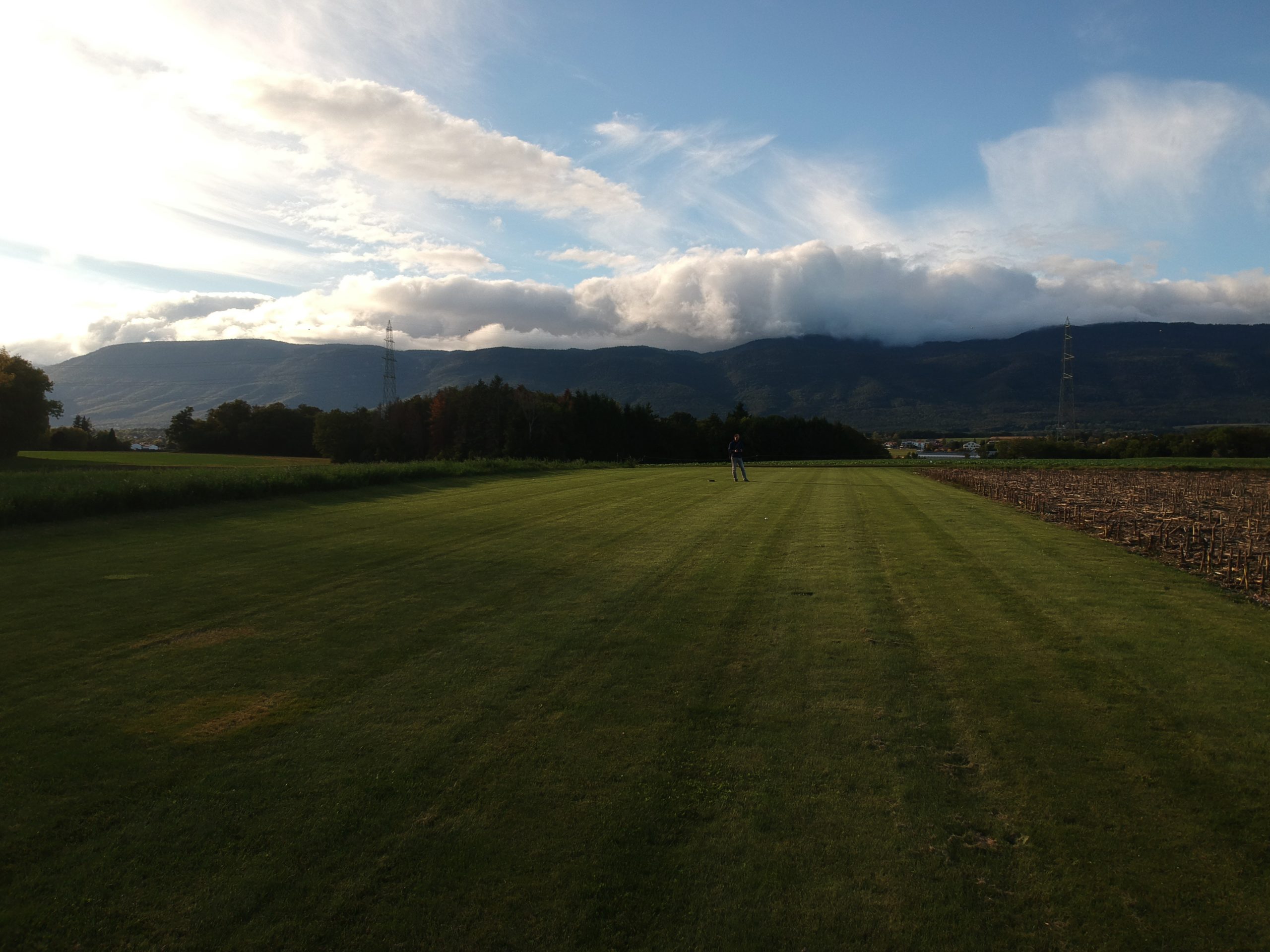It is not rare for me to do a timelapse from La Barillette. Several years ago I tried a timelapse with a 360 camera where you saw clouds forming overhead and in a spherical video. I also filmed a timelapse of the Paléo parkings filling up. This time I went up the Jura in the hope of filming Autumn colours but as I got to the top my project changed.
The problem with filming Autumn colours is that you need to be there at the right time of day and with the light coming from the right direction. The light was coming from the wrong angle so stopping in the woods would have allowed me to get three or four frames before moving on to the next location.
When you’re in a car this type of filming is not interesting. It’s more interesting to get to one location and get a greater diversity of shots. The other advantage is that you can always head back down and get the shots you thought were still interesting.
As I looked from above and assessed the situation I saw that clouds were forming and dissipating. I thought that I may eventually find myself in a cloud with poor visibility. I was more interested in capturing the formation of clouds. They did form, but then they dissipated, and then they formed again but more sparsly before dissipating again.
This is fantastic when you’re filming time-lapses because the change is noticeable without being accelerated so you can imagine what it would give if you did speed it up.
The challenge with timelapse is knowing whether something will take minutes, hours, days or even longer to capture. I have one idea that I assess would take six or seven hours which I will not discuss at this stage.
Usually when I film timelapses I set the camera up so that it records one or two frames every so many seconds. In this case I just started recording. I did not know on what timescale the actions would occur so it gave me greater flexibility in post production.
The footage was sped up from 800 percent to 5000 percent. The clouds that were vanishing was fast. The river of clouds flowing down the valley was slower and thus sped up more. The other challenge is to decide how tight or wide you want the frame to be. With the trees and the river of clouds it’s hard to know whether to have a tighter shot where the action may render the frame boring sooner or wehter tom have a wide shot where the action only takes up half the screen.
In the end this is about gaining experience rather than getting things right first time. It’s about learning to see and anticipate how nature will behave. If you get it right then it can be of great beauty. If you get it wrong you ignore it and think of a new idea.
Later in the year, when Autumn comes we can expect the clouds to behave like this. It’s the “Soupe de Pois” as some call it. I have at least two or three ideas to experiment with and two of them can be done from the comfort of home.
I did see something exceptional on the way back down. A herd of five chevreuils as I drove down afer I finished getting my timelapse footage. That’s the most I’ve seen at once when driving.

Leave a Reply